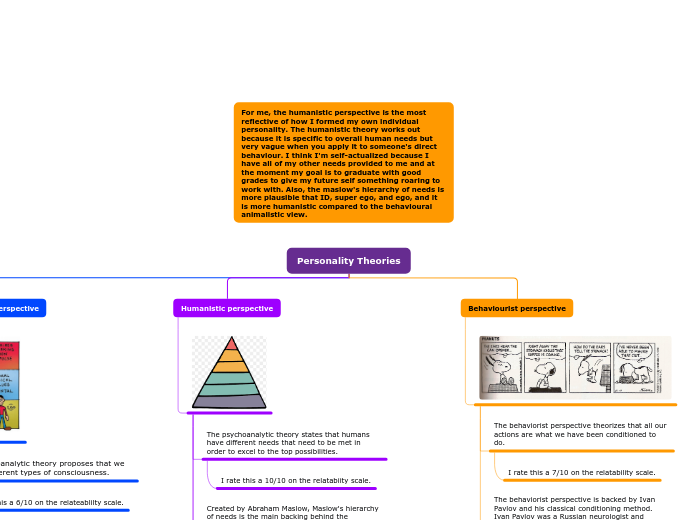przez Mariyah Bukhari 3 lat temu
429
Personality Theories

przez Mariyah Bukhari 3 lat temu
429

Więcej takich
He constructed his theory while he was trying to see when will dogs begin their digestive process. As he added a bell to beacon the dog, he realized that the dog would begin salivating just from the sound of the bell.
That one was pretty simple to say, but then there was Burrhus Frederic Skinner, the theorist behind operant conditioning.
B.F. Skinner was an american psychologist. He built up on Pavlov's theory, and used the terms Positive reinforcement, negative reinforcement, positive punishment, and negative punishment.
He got these terms figured out as he did his experiment on rats.
Positive reinforcement was letting a rat know that every time it pulled the lever, it would get food.
Negative reinforcement was having the box electrify the rat until the rat pulled the lever.
I don't know specifically what positive punishment was used for in this experiment, put it probably just focused on punishing the rat every time it tried to escape or damage something.
Negative punishment was that in-order to stop the box from heating up, the rat would need to pull the lever.
I rate this a 7/10 on the relatability scale.
Humans that did well usually felt like they belonged. They need friendship, family, etc.
And he also saw that all people had self esteem, and to be a better person they would need to have a strong one. For that, confidence, achievement, respect, etc. where needed.
And at the top of the hierarchy were self actualized people. these people had all the lower needs fulfilled and could now focus on the future and self improvement. They would go with the flow, have a strong morality, have lots of creativity and more.
He than knew that humans required safety. They need security of the body, employment, family, good health, etc.
Maslow came up with this theory out of frustration towards the theories from the time before him. He thought that the theories that he read didn't explain enough about people's nature.
I rate this a 10/10 on the relatabiity scale.
I rate this a 6/10 on the relateablilty scale.